Foundry ceramic filters are made of polyurethane foam plastic and immersed in the ceramic slurry made of ceramic powder, binder, sintering aid, suspending agent, etc. Then squeeze out the excess slurry, so that the ceramic slurry is evenly applied to the carrier skeleton into a green body. The green body is dried and sintered at high temperatures. This process is also known as the organic foam impregnation method, and is currently a common domestic foam ceramic production process.
Foundry Ceramic Filters Process
The slurry spraying process is one of the processes for producing foam ceramic filter. It sprays the ceramic slurry under pressure to the filter plates through the spray nozzle. The purpose is to improve the surface properties of the green body, including improving the smoothness of the surface and thickening the wire. And at the same time, it also affects the internal quality of the product. The spraying process mainly includes two forms according to the spraying method, manual spraying, and automatic spraying. According to the spraying sequence, it can be divided into spraying after sizing and spraying after drying.

Manual Spraying Process
Manual spraying is to use the pressure generated by the air compressor (0.5 ~ 1.0MPa) to spray the slurry from the spray gun. The worker controls the spraying on the surface of the blank, and sprays the other side after the surface is dry. The advantages are less investment, less waste of slurry, and flexible spraying volume control. Disadvantages are many labor requirements, low work efficiency, uneven slurry attachment, etc.
Automatic Spraying Process
The automatic spraying process is derived from the glazing process of building daily-use ceramics, that is, the slurry is sprayed on the surface of the belt or chain blank of the drive through the spray head, and then dried by the subsequent short hot air or infrared. Spray the other side after turning over, and then dry to complete the automatic spraying process. The advantages of automatic spraying are high working efficiency and relatively uniform spraying of blanks. Disadvantages are large investment in the first phase, large waste of slurry, and frequent replacement of nozzles in the later period.
Spraying Sequence
The spraying after sizing is a wet blank spraying, which saves the subsequent drying process, and the adsorption effect of the blank on the slurry is general. However, for products with large size and thin thickness, spraying after sizing is also suitable to prevent damage to the green body by spraying after drying. But its disadvantage is that it can only be sprayed on one side, which is generally the front side required to filter the metal melt. Considering the effect of spraying, the method of spraying after sizing is not very common.
The spraying after drying belongs to dry blank spraying, it is suitable for double-sided spraying, and the slurry can be adjusted to the maximum consistency of the spray to improve the surface of the blank to the greatest extent. This is a common spraying method for foam ceramic production. The disadvantages of spraying after drying are large labor, damage to the blank, and easy to produce slag.


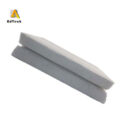
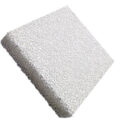


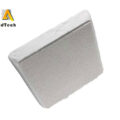
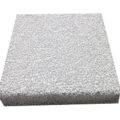
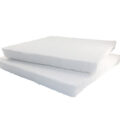

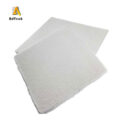



Pingback:Ceramic Foam Filters Sizing – 站点标题